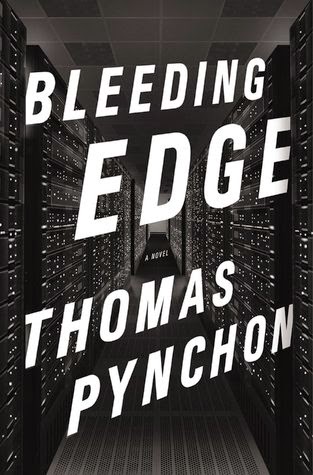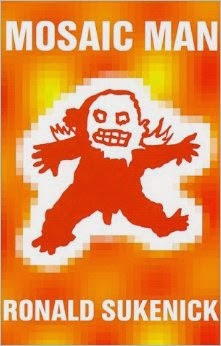For me, reading
Apocalyptic Planet: Field Guide to the Everending Earth by Craig Childs felt like the end of a sequence of books I've read (and often written about) over the past decade or so--books specifically about the climate crisis.
The pre-history of this sequence begins in the late 1980s, when several very hot summers in the eastern US coincided with the first extended revelations of what were then called the Greenhouse Effect and Global Warming. Bill McKibben claims to have written the first book on the subject in
The End of Nature, but there were
others at about that time, as well as
After the Warming, James Burke's excellent television treatment (which included describing history that had been determined by climate, then a novel idea but now much more accepted.) Science writer Jonathan Weiner devoted several chapters of his 1990 book
The Next One Hundred Years to global heating research to that point, and its likely dramatic effect on the future.
After writing
Earth in the Balance in 1992, then running for President without much mentioning these issues in 2000, Al Gore gave the climate crisis its highest profile to that point in 2006 with his film and book,
An Inconvenient Truth. Unfortunately, those needing political cover to oppose efforts to address the climate crisis so as to please fossil fuel billionaire donors, found it in a former Democratic presidential candidate--especially hated since they all knew he'd actually been elected.
But for my purposes here, I note
An Inconvenient Truth as representing other books and articles of the period, in that they made the substantial case for global heating caused by carbon pollution, and warned of future consequences. Gore in particular talked about how there was still time to "solve" the climate crisis. How do you solve a crisis? You don't--you address a crisis, you solve a problem--but it did convey the idea that action now could mean there would be no climate crisis.
Other works generally followed this line. Then
came Forecast by Stephan Faris, in which the author reported on consequences already happening. The bigger ones were far away (Darfur, where climate caused scarcity that fed warfare), South Asia, South America and the good news for some/bad news for others of Arctic warming. More subtle effects felt in the US included changes in the California wine industry as the best climate for grapes was moving northward.
Faris' book was largely ignored, however. The idea of present consequences didn't follow either the rabid right line (move along, nothing will ever happen here) or the left line (we still have time to pass cap & trade or a carbon tax and solve this.)
The Vanishing Face of Gaia: A Final Warning by James Lovelock (2009) was not the first to say it is basically too late, but Lovelock (co-originator of the Gaia theory) was both revered and considered a bit radical by environmentalists. Bill McKibben gave this book a respectful
review but found fault with main conclusions. Lovelock wrote that perhaps only 200 million people on the entire planet would survive the climate crisis and related phenomena, all living in polar regions. There wasn't sufficient evidence for that, McKibben said.
But then something happened. Scientific observations--particularly of polar melting--were showing consequences not predicted to happen for decades under worst case scenarios for global heating. The change in tone was immediate. For me the first and still most powerful was David Orr in
Down to the Wire (2009.) The evidence that global heating was causing grave consequences--and due to lag times in effects, would continue into the near future--became a guardedly accepted premise, it seemed almost overnight.
As Orr wrote, "The news about climate, oceans, species, and all of the collateral human consequences will get a great deal worse for a long time before it gets better. The reasons for authentic hope are on a farther horizon, centuries ahead...The change in our perspective from the nearer to the longer term is, I think, the most difficult challenge we will face."
So no longer were we going to solve the climate crisis. We were going to have to deal with its effects, while at the same time attacking its causes, not to save ourselves or even our grandchildren, but the ultimate future of human civilization and perhaps the human race. (Al Gore eventually joined in this view.)
This presented two basic problems that are both intellectual and emotional. One is: how do you work up the hope and resolve to attack and try to solve these problems when you'll never see the better outcome, but you will see things get worse? The other--and perhaps emotionally the first--how do you deal with what's to come, that (somewhat depending on where you are) may look a lot like apocalypse?
Both of these became the grim and delicate subjects of such books
as Bill McKibben's
Eaarth (2010), the title indicating that the planet has already changed and won't change back, and the best we can do is "manage our descent."
Paul Gilding's
The Great Disruption (2010),
while suggesting that the climate crisis will mean "we'll tragically lose a few billion people," maintained that humanity will rise to the occasion and save itself from extinction, thus providing this book's rep as "optimistic." In his third book on the climate crisis and related matters, James Gustave Speth mixed the same dire assumptions and hope with a plan
in America the Possible (2013.)
Mark Hertsgaard, who got onto the time lag consequences early, wrote clearly on the two time frames and what they
mean in
Hot: Living Through the Next Fifty Years on Earth (2011.)
Since then, the news of effects has been--as Orr predicted--increasingly bad. Though the far future looks a little better, with the rise of clean energy and new carbon regulations (both fostered by the Obama administration), and with hopes for a meaningful global treaty later this year, we still must deal with those two basic problems, conceptually and emotionally.
That all leads to
Apocalyptic Planet (published in hardcover in 2012, and in paperback in 2013.) Dealing emotionally with the apocalyptic possibilities is an ongoing process, with lots of changes in perspective and feeling.
What Craig Childs did was to visit places where apocalypse is visible in various ways: where climate crisis consequences are visible and tangible and ongoing, and to extreme places where apocalypse already happened, perhaps a very long time ago, and in a sense is still happening. Although I discovered this book late, it also took me a long time to read it all. I could only handle so much apocalypse at a time.
Childs begins in the desert and moves on to the glaciers. It's clear from these first two chapters that his writing is vivid, economical and eloquent. He describes his own single set of experiences and those of companions in these extreme landscapes.
The combination of beauty and fear in these places produces a complex awe. As his party of documentary filmmakers finds one astonishingly fast-melting glacier after another, several couples find crevices in the ice where they have sex.
These places are indicators of apocalypse. The extreme and alien landscape of the Mexican desert is inexorably expanding into Arizona, as drought deepens and consolidates. Scientists in his party are astounded by the speed with which the glaciers they observe can melt and drain away--feelings echoed more recently in statements about melting in Antarctica.
He goes to Alaska with his intrepid mother to look at consequences of sea level rise. He returns to his birthplace of Arizona to explore the rise and fall of civilizations, where he talks with an archeologist. "As dark came on, Wright and I talked about how civilizations tend to fall, common themes you see throughout time: environmental decay, failure of top-heavy infrastructure, resource depletion, loss of social egalitarianism, disease, conflict."
He asked Wright what such an apocalypse would look like. It would start out looking like Phoenix today, with decay beginning at the edges. Apocalypse can be a slow process in human time.
Childs grapples with the twin sense that apocalypse simply happens over and over, and every civilization that has risen so far has fallen, but that once anticipated some of these fates may be avoidable.
Or apocalypse can happen relatively quickly. In Greenland he discusses with a climate scientist the possibilities of rapid climate change. It's happened before, without human help--and this is one of this book's contributions: it deals in different time frames, including a multi-billion year perspective.
A major figure in this long Greenland chapter is Koni Steffans, an European climate expert whose research camp Childs is visiting. From time to time, government officials and others visit the camp for updates. "What he tells people who visit is not that the sky is falling but that we live in a world of falling skies and it is best not only to know your options but to make moves ensuring the worst does not happen." [p.176]
Childs does not limit his explorations to consequences of the climate crisis. He looks at tectonics in Tibet, volcanoes in Hawaii (a monster volcano eruption is probably the best candidate for near-instant, near-total apocalypse.) The Tibet chapter includes a daring ride down an uncharted river, a surprising release from the book's main tensions.
But for me the scariest landscape he describes is a corn field in Iowa--genetically modified corn to resist predators is combined with chemical killers of all non-modified life. The crops themselves are depleting the soil without regenerating it: they are killing the future they are feeding.
This environment of deliberate industrialized death is the occasion for discussion of species extinction (the specific subject of Elizabeth Colbert's
2014 book The Sixth Extinction.)
This somehow is the most emotionally powerful aspect of apocalypse, perhaps because there is nothing of awe and terror in it. It is indirect but conscious destruction, invisible and hollow. A scientist points out that individual animals of species about to disappear are mostly not ill or weak. Their environment, their breeding grounds, makes following generations smaller and then impossible. So one day they are just not there anymore.
Childs and his companion spend days and nights in these corn fields, searching for any life at all--insects, birds, grass. They find little, but the little they do find is a source of some hope.
Time scales and the constituents of apocalypse, including the climate crisis, come together in the final chapter, as Childs searches out the limits of life in the severest desert he could find, in South America. He looks beyond what we define as the living to find the life of the planet. "The earth is a seed planting itself over and over."
There is no easy solace, or easy despair. This book expands the usual view of the Earth, in time and space, in levels and variety. It becomes a little like contemplating the realities we suppress, of what happens over time in our own lives, in the inevitability of death and the mysteries of life changing and continuing.
This book helps to provide a different perspective for thinking and feeling through future prospects as shaped by global heating. But it doesn't simplify those thoughts and feelings into a philosophical complacency. Its strongest message is to experience fully what we are privileged to be part of in our own brief time on Earth, in all its dimensions. It also supports hope as an operating principle, as a kind of responsibility that comes with being alive. The responsibility is to contribute to a better future--even if that means a less awful future that it might otherwise be-- together with our responsibilities to people and communities and places in our present.


























UE9s3wBeW9BR(UfIV%2CWg~~_35.jpg)



